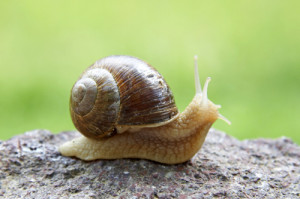Lawn care: All you ever wanted to know about slugs and snails
Although snails and slugs look harmless enough (just kind of gross and slimy, maybe), they are actually quite destructive to domestic and commercial gardens. They can cause so much damage that it is best to have an effective lawn care regimen in place to stop the damage before it begins. First you should know a little about these squishy insects.
Snails and slugs are mollusks. The slimy trail they leave behind as they squirm all over your pavement and plants is what allow them to stay alive, since they need to be moist. This slime also helps them move around. These bugs are hermaphrodites, so they can populate your garden all by themselves without any help. Lawn care specialists say you may find them attached to garden fences or other structures near plants when the temperature becomes much cooler.
There is a small difference between the two insects. Snails have shells that give them protection. Slugs are basically the same insect, but without a shell. Both can stretch their bodies quite far and both have a set of antenna and eyes. Although they enjoy any type of foliage, they are partial to fruit plants such as tomatoes, strawberries, lemon trees, etc.
During the winter, snails and slugs hibernate, sometimes in your home in a warm, dark, damp location. They don’t like the sun much since the heat and light can dry out their mucus. When they reproduce, they can lay up to 500 eggs in one season, however that is not to say all will survive. Their life expectancy is about four years, but most tend to die off before then.
If you have a persistent snail or slug problem, be sure to save your garden by calling your local lawn care authorities.



